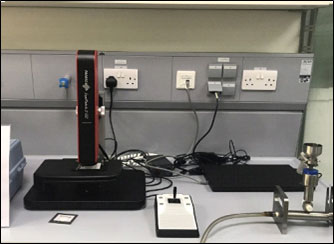Oil cleanliness is a measure of the level of particle contaminants in the oil, including both insoluble and hard particles. Acceptable oil cleanliness levels are often determined by Original Equipment Manufacturer (OEM) recommendations and can be controlled through proactive maintenance methods.
It is particularly important to maintain oil cleanliness in applications with tight clearances (such as equipment with servo valves) or harsh operating conditions (such as extreme temperatures, pressures or speed.
Oil cleanliness is measured against ISO Cleanliness Code 4406. This code quantifies particulate contamination levels per milliliter of oil at 4, 6and 14 µm. The first step in measuring oil cleanliness is counting the particulate matter using one of several particle counting methods. These include:
ISO 4407: In this method, the oil sample is passed through a very fine filter patch to capture particles. An optical microscope is then used to count the particles that are between 5 and 15 µm. This method was one of the original methods used for particle counting, but it is extremely time-consuming and is rarely used today.
ISO 11500: This method, which is the most widely deployed method today, uses an optical particle counter. A laser or white light is focused on a capillary detection zone. As the oil sample passes through the detection zone, the particles create a shadow on a photocell detector. The drop in voltage produced by the photocell then helps determine the size of the particles passing through. Any particles greater than 4, 6 and 14 µm are counted. Because the test is fully automated, results are processed quickly.
Regardless of the test method used, it’s critical to take a relevant and representative sample when measuring particle counts to properly determine the contamination level. Incorrect sampling can adversely affect the cleanliness level in the sample bottle, which will skew results and lead to incorrect insights.
Cleanliness of hydraulic oils
In Tribocare, we utilise the ISO 11500 method to report the ISO Code on Used Hydraulic Oil Samples. This is included in our standard test scope of our UOA program.
Cleanliness of Engine OIls
 The operation manual for ME engines recommends testing the oil cleanliness regularly, including a particle count in accordance with ISO 4406. Cleanliness of hydraulic oil is normally examined by the laser method. However, this is not a suitable method for the system oil, as the system oil is black containing harmless soot, small water-droplets, air-bubbles, etc., which the laser method counts as particles. With the microscope method, the soot, etc., is removed and merely the number of actual particles are counted. MAN Diesel & Turbo therefore recommends using the microscope method (ISO 4407).
The operation manual for ME engines recommends testing the oil cleanliness regularly, including a particle count in accordance with ISO 4406. Cleanliness of hydraulic oil is normally examined by the laser method. However, this is not a suitable method for the system oil, as the system oil is black containing harmless soot, small water-droplets, air-bubbles, etc., which the laser method counts as particles. With the microscope method, the soot, etc., is removed and merely the number of actual particles are counted. MAN Diesel & Turbo therefore recommends using the microscope method (ISO 4407).
Tribocare we are one of the few labs that have the capabilities as long as the experience to test with the ISO 4407 method. Further to determining the required Cleanliness of Oil with this method, this is as well a very powerful tool, to determine successfully the efficiency of the separators.
Downloads
MAN – Filtration Handbook